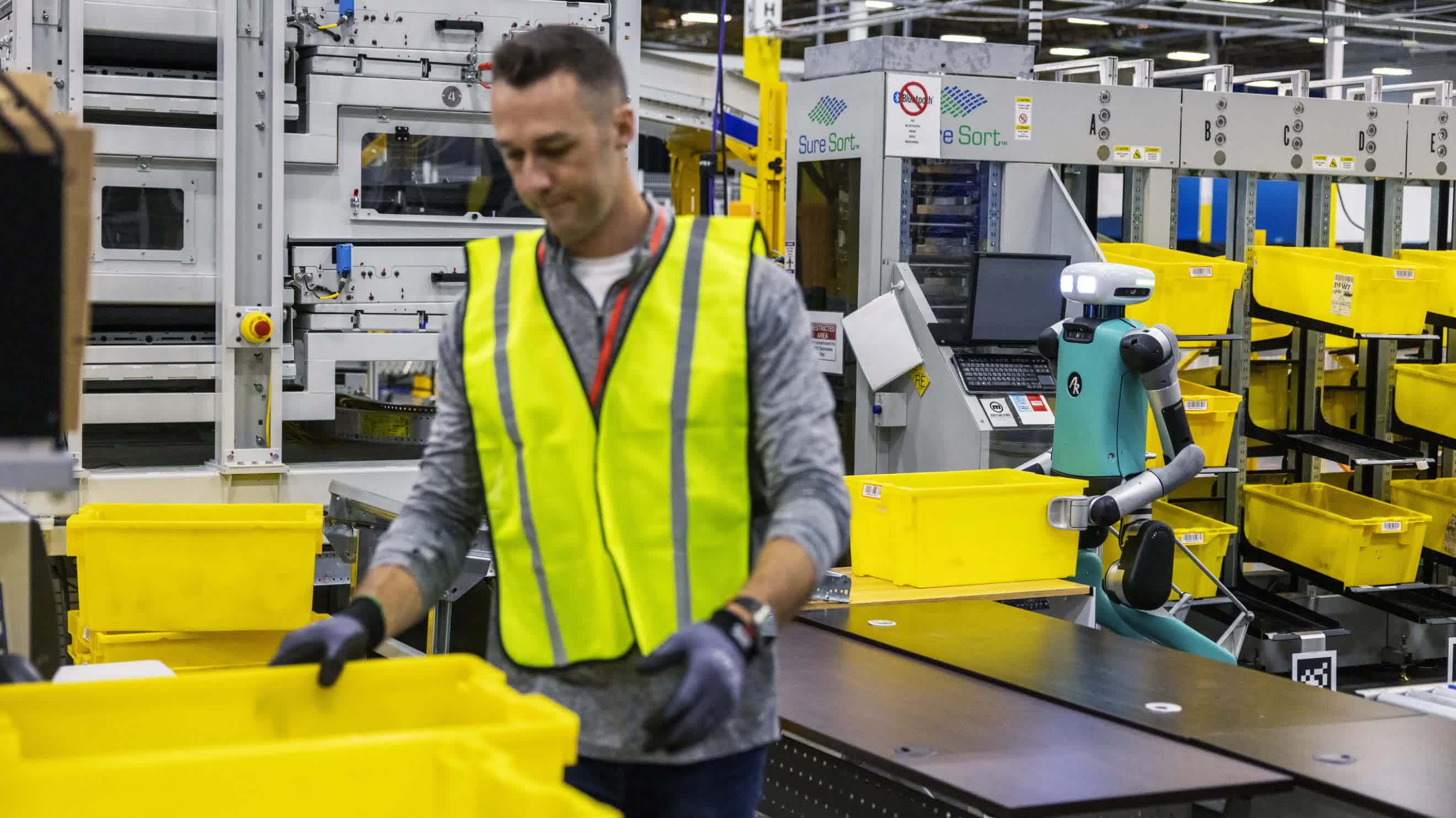A hot potato: Amazon has long insisted that the advanced robots being introduced to its warehouses aren't meant to replace humans. But believing that claim isn't easy when the number of machines deployed in its facilities has more than doubled over the last few years.
Amazon's use of robots in its fulfillment centers and warehouses goes back more than a decade, but it really started ramping up the numbers in recent times, from 350,000 robots in 2021 to more than 750,000 by June 2023.
It's not just the number of robots Amazon is introducing that's worrying workers; it's their human-like design. In October last year, the tech giant announced Digit, a 5-foot 9-inch 143-pound robot from Agility Robotics, was being deployed to warehouses. The two-legged machine can walk forward, backward, and sideways; squat and bend; and move, grasp, and handle items using its arm/hand-like clasps. Basically, it can imitate almost everything that a human can do, and without needing to pee in a bottle or take time off for stress.
There have been plenty of regular, non-human-like robots added to Amazon warehouses, too, including the Roomba-esque Sequoia, the fully autonomous Proteus, a robotic arm called Sparrow, and more, each more advanced than the last in terms of design and the software behind them.
Amazon likes to assure employees that their jobs are safe following the introduction of a new robot model. They're supposedly in place to do the monotonous, repetitive, and dangerous jobs instead of humans and are designed to work alongside people, not replace them. Stefano La Rovere, Amazon's director of global robotics, mechatronics, and sustainable packaging, said that advanced modern tech will merely enhance workers' roles and create new job categories. He claimed that 700 new categories of jobs have already been created through the use of this technology.
Damion Shelton, CEO of Agility Robotics, didn't seem as concerned about alleviating job-loss fears. In December, he said that the health of businesses using these robots was far more dire than any perceived fears about job replacement. Amazon, incidentally, has a nearly $2 trillion market cap and its annual gross profit for 2023 was more than $270 billion.
Like virtually every other tech firm, Amazon has been cutting jobs this year. CEO Andy Jassy said last month that the company isn't done with lowering costs as it embraces not only robots but also that other "this will help and not replace people, honest" technology: generative AI. Jassy believes the tech will be as big as the cloud and as important as the advent of the internet.
